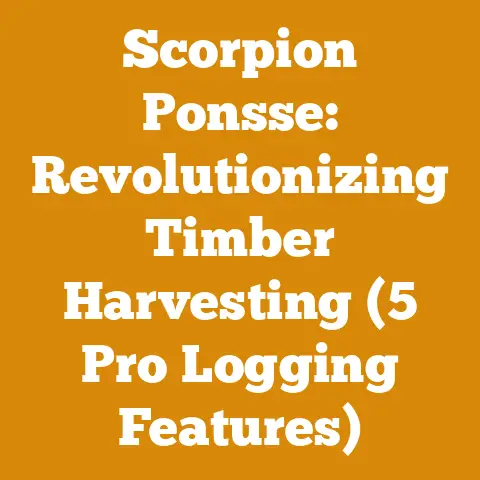Husqvarna Warranty Extension (5 Pro Tips for Wood Processing)
Have you ever wondered if extending the warranty on your Husqvarna chainsaw is worth it, especially when you’re knee-deep in wood processing? I’ve spent years felling trees, milling lumber, and prepping firewood, and I’ve learned firsthand the value of a reliable chainsaw and the peace of mind that comes with a solid warranty. In this guide, I’ll share my top pro tips for wood processing and explain how a Husqvarna warranty extension can be a game-changer.
Understanding Husqvarna Chainsaw Warranties
Before diving into the pro tips, let’s clarify what a Husqvarna chainsaw warranty typically covers and why extending it might be a smart move.
Standard Warranty Coverage
Husqvarna chainsaws usually come with a limited warranty that covers defects in materials and workmanship. This means if your chainsaw malfunctions due to a manufacturing error within the warranty period, Husqvarna will repair or replace it. The standard warranty period can vary, so it’s crucial to check the specifics of your model.
What an Extended Warranty Offers
An extended warranty provides coverage beyond the standard warranty period. It essentially acts as a safety net, protecting you from unexpected repair costs due to mechanical failures. Think of it as insurance for your chainsaw, ensuring it stays in top working condition for longer.
Is an Extended Warranty Worth It?
This depends on several factors, including how frequently you use your chainsaw, the type of wood you process, and your comfort level with potential repair costs. If you’re a heavy user, processing dense hardwoods regularly, an extended warranty can be a worthwhile investment. I’ve seen firsthand how demanding wood processing can be on a chainsaw, and the potential repair costs can quickly add up.
Pro Tip 1: Choosing the Right Chainsaw for the Job
Selecting the right chainsaw is the foundation of efficient and safe wood processing. Using an underpowered or inappropriate chainsaw can lead to premature wear and tear, increasing the likelihood of needing warranty service.
Chainsaw Size and Power
Consider the size of the trees you’ll be felling and the type of wood you’ll be processing. For small trees and occasional use, a smaller chainsaw with a 14-16 inch bar might suffice. However, for larger trees and frequent use, I recommend a more powerful chainsaw with an 18-20 inch bar or longer.
For example, when I’m processing oak or maple, I prefer my Husqvarna 460 Rancher with a 20-inch bar. Its power and durability make it ideal for handling tough hardwoods.
Chainsaw Features
Look for features that enhance performance and longevity. Automatic chain lubrication, anti-vibration systems, and easy-start mechanisms can make a big difference in the long run. These features not only improve the user experience but also reduce stress on the chainsaw’s components.
Chainsaw Maintenance
Regular maintenance is crucial for maximizing the lifespan of your chainsaw. I make it a habit to clean the air filter, sharpen the chain, and check the spark plug after each use. Proper maintenance not only keeps your chainsaw running smoothly but also helps prevent problems that could void your warranty.
Takeaway: Choosing the right chainsaw and maintaining it properly are essential for preventing premature wear and tear.
Pro Tip 2: Mastering Chainsaw Safety Techniques
Safety is paramount when operating a chainsaw. Improper techniques can lead to accidents, injuries, and damage to your equipment.
Personal Protective Equipment (PPE)
Always wear appropriate PPE, including a helmet, safety glasses, hearing protection, gloves, and chainsaw chaps. These items are designed to protect you from potential hazards, such as flying debris, loud noise, and kickback.
I remember one time when I was cutting firewood without wearing safety glasses. A small piece of wood flew up and hit me in the eye. Fortunately, it wasn’t serious, but it was a painful reminder of the importance of PPE.
Safe Cutting Practices
Learn and practice safe cutting techniques, such as proper stance, grip, and cutting angles. Avoid cutting above shoulder height, and always be aware of your surroundings. Kickback is a common cause of chainsaw accidents, so be sure to understand how to prevent it.
Chainsaw Inspection
Before each use, inspect your chainsaw for any signs of damage or wear. Check the chain tension, bar condition, and throttle response. If you notice anything unusual, address it before starting work.
Takeaway: Prioritizing safety not only protects you from injury but also helps prevent damage to your chainsaw.
Pro Tip 3: Sharpening and Maintaining Your Chainsaw Chain
A sharp chainsaw chain is essential for efficient and safe wood processing. A dull chain requires more force to cut, increasing the risk of kickback and putting unnecessary strain on your chainsaw.
When to Sharpen Your Chain
Sharpen your chain whenever it becomes dull. Signs of a dull chain include difficulty cutting through wood, excessive sawdust production, and increased vibration. I typically sharpen my chain every few hours of use, depending on the type of wood I’m cutting.
Sharpening Tools
You’ll need a few basic tools to sharpen your chainsaw chain, including a round file, a flat file, a file guide, and a depth gauge tool. A chainsaw chain sharpener can also be a worthwhile investment if you sharpen your chain frequently.
Sharpening Technique
Follow these steps to sharpen your chainsaw chain:
- Secure the chainsaw in a vise.
- Use the round file and file guide to sharpen each cutter, maintaining the correct angle and depth.
- Use the flat file to lower the depth gauges, ensuring they are slightly below the cutter height.
- Check the chain tension and adjust as needed.
Chain Maintenance
In addition to sharpening, regularly inspect your chain for damage or wear. Replace the chain if you notice any cracks, broken teeth, or excessive stretching.
Takeaway: A sharp and well-maintained chainsaw chain is crucial for efficient and safe wood processing.
Pro Tip 4: Optimizing Your Wood Splitting Techniques
Splitting wood efficiently can save you time and energy. Using the right techniques and tools can make the job much easier.
Choosing the Right Splitting Tool
For small logs and softwoods, a splitting axe might suffice. However, for larger logs and hardwoods, I recommend using a log splitter. Log splitters come in various sizes and configurations, so choose one that suits your needs.
I use a 27-ton hydraulic log splitter for most of my firewood processing. It’s powerful enough to handle even the toughest hardwoods, and it saves me a lot of time and effort.
Splitting Techniques
When splitting wood, always position yourself safely and use proper technique. Keep your feet firmly planted and swing the axe or operate the log splitter with controlled movements. Avoid splitting wood on uneven ground or near obstacles.
Wood Seasoning
After splitting your wood, it’s essential to season it properly. Seasoning involves drying the wood to reduce its moisture content. Dry wood burns more efficiently and produces less smoke.
Seasoning Time
The amount of time required to season wood depends on the type of wood and the climate. Softwoods typically take 6-12 months to season, while hardwoods can take 12-24 months. Store your firewood in a dry, well-ventilated area to promote faster seasoning.
Takeaway: Efficient wood splitting techniques and proper seasoning are essential for producing high-quality firewood.
Pro Tip 5: Understanding Wood Types and Their Properties
Different types of wood have different properties, such as density, hardness, and moisture content. Understanding these properties can help you choose the right wood for your specific needs and optimize your wood processing techniques.
Hardwoods vs. Softwoods
Hardwoods come from deciduous trees, such as oak, maple, and birch. They are typically denser and harder than softwoods, making them ideal for firewood and construction. Softwoods come from coniferous trees, such as pine, fir, and spruce. They are typically less dense and easier to work with, making them suitable for furniture and paper production.
Wood Density
Wood density is a measure of the mass per unit volume. Denser woods tend to burn longer and produce more heat. For example, oak and maple are denser than pine and fir, making them better choices for firewood.
Moisture Content
The moisture content of wood affects its burning efficiency and stability. Freshly cut wood can have a moisture content of 50% or higher. Seasoned firewood should have a moisture content of 20% or less.
Wood Identification
Learning to identify different types of wood can be a valuable skill. You can identify wood based on its color, grain pattern, and density. There are also several online resources and field guides that can help you identify wood species.
Takeaway: Understanding wood types and their properties can help you choose the right wood for your needs and optimize your wood processing techniques.
Husqvarna Warranty Extension: Real-World Examples
Let’s look at some real-world examples of how a Husqvarna warranty extension can pay off.
Case Study 1: The Worn-Out Clutch
I once had a Husqvarna 372XP that I used extensively for felling trees. After about three years of heavy use, the clutch started to slip. The standard warranty had expired, but I had purchased an extended warranty. I took the chainsaw to an authorized Husqvarna service center, and they replaced the clutch free of charge. The repair would have cost me several hundred dollars, so the extended warranty saved me a significant amount of money.
Case Study 2: The Faulty Ignition Module
Another time, a friend of mine had a Husqvarna 455 Rancher with a faulty ignition module. The chainsaw would start intermittently, and it was becoming increasingly unreliable. He had purchased an extended warranty, so he took the chainsaw to a service center. They diagnosed the problem and replaced the ignition module under warranty. Without the extended warranty, he would have had to pay for the repair out of pocket.
Case Study 3: The Cracked Crankcase
A colleague of mine, who runs a small logging operation, experienced a cracked crankcase on his Husqvarna 576XP. This was a major issue that required a complete engine rebuild. Fortunately, he had invested in the extended warranty. The repair was fully covered, saving him thousands of dollars and preventing significant downtime for his business.
Deciding if a Warranty Extension is Right for You
Now that you understand the benefits of a Husqvarna warranty extension, how do you decide if it’s right for you? Consider the following factors:
Frequency of Use
If you use your chainsaw frequently, an extended warranty is more likely to be worthwhile. Heavy use increases the risk of mechanical failure, making an extended warranty a smart investment.
Type of Wood
If you process dense hardwoods regularly, an extended warranty can provide peace of mind. Hardwoods put more strain on your chainsaw, increasing the likelihood of needing repairs.
Budget
Consider your budget and how much you’re willing to spend on potential repairs. An extended warranty can provide financial protection against unexpected repair costs.
Risk Tolerance
Assess your risk tolerance. If you’re comfortable with the possibility of paying for repairs out of pocket, you might not need an extended warranty. However, if you prefer the peace of mind that comes with knowing you’re covered, an extended warranty is a good choice.
Maximizing the Value of Your Warranty Extension
If you decide to purchase a Husqvarna warranty extension, here are some tips for maximizing its value:
Read the Fine Print
Before purchasing an extended warranty, carefully read the terms and conditions. Understand what is covered and what is excluded. Pay attention to any deductibles or limitations.
Keep Records
Keep all your receipts and warranty documents in a safe place. You’ll need these documents to file a warranty claim.
Follow Maintenance Recommendations
Adhere to Husqvarna’s recommended maintenance schedule. Neglecting maintenance can void your warranty.
Use Authorized Service Centers
When you need warranty service, take your chainsaw to an authorized Husqvarna service center. These centers have the expertise and equipment to properly diagnose and repair your chainsaw.
Document Problems
If you experience any problems with your chainsaw, document them thoroughly. Keep a record of when the problems occurred, what you did to try to fix them, and any conversations you had with service representatives.
The Future of Wood Processing and Chainsaw Technology
The world of wood processing is constantly evolving, with new technologies and techniques emerging all the time. Chainsaw manufacturers like Husqvarna are continually innovating to improve the performance, safety, and durability of their products.
Battery-Powered Chainsaws
Battery-powered chainsaws are becoming increasingly popular. They offer several advantages over gas-powered chainsaws, including lower noise levels, reduced emissions, and easier maintenance. Battery technology is improving rapidly, and battery-powered chainsaws are now capable of handling many of the same tasks as their gas-powered counterparts.
Smart Chainsaws
Some chainsaw manufacturers are developing “smart” chainsaws that incorporate sensors and data analytics. These chainsaws can monitor their own performance and provide alerts when maintenance is needed. They can also track usage patterns and provide insights into how to optimize cutting techniques.
Sustainable Wood Processing
Sustainability is becoming increasingly important in the wood processing industry. Loggers and wood processors are adopting more sustainable practices, such as selective logging, reforestation, and using wood waste for energy production.






